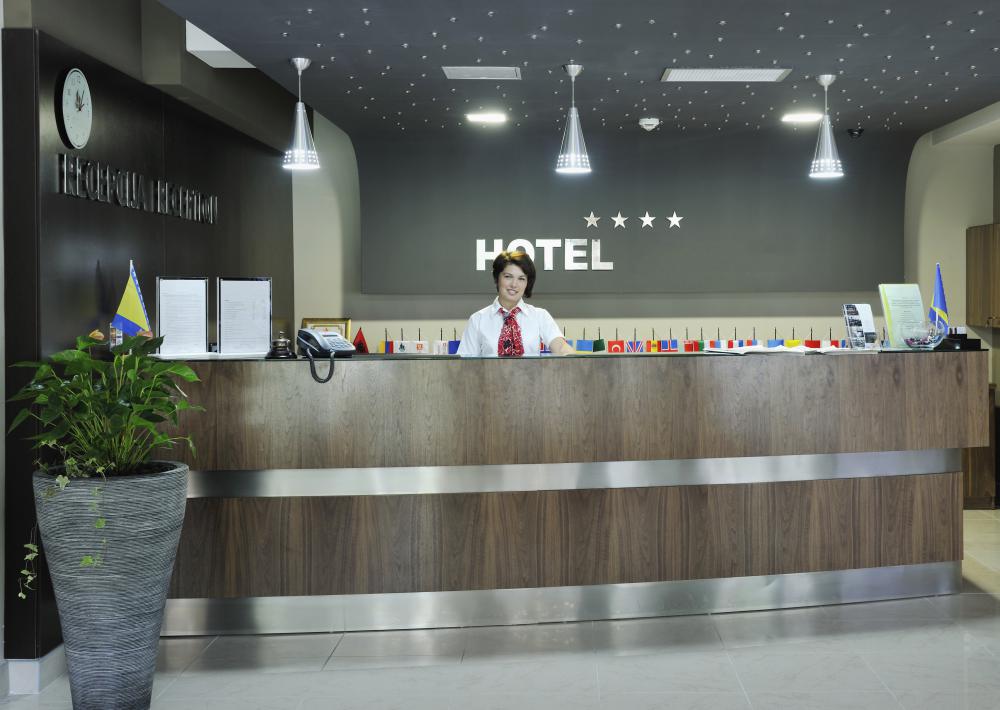At HomeQuestionsAnswered, we're committed to delivering accurate, trustworthy information. Our expert-authored content is rigorously fact-checked and sourced from credible authorities. Discover how we uphold the highest standards in providing you with reliable knowledge.
What is a Vestibule?
In architecture, a vestibule is a space between the indoors and the outdoors which connects the outside world with the inside of a building. Vestibules are part of the building, but not situated in the main core of the structure, creating a transitional space which can serve a number of functions. Both residences and commercial structures can have vestibules, with this architectural feature being more common in structures which are designed to look and feel grand and imposing.
The term “vestibule” comes from the Latin vestibulum, or “entrance court.” The Greeks and Romans both used vestibule-like features in their temples and public buildings, with Greek and Roman vestibules being colonnaded outdoor spaces which surrounded the entrance to the building. The vestibule often had religious or ceremonial significance, marking a point of departure from the mundane world, and it allowed builders to make structures feel more formal.

In the modern era, the vestibule can be used in a variety of ways. Some vestibules are surrounded by columns or other features which place them more outdoors than in, while others are behind sets of doors, acting as a barrier between the outside and the core of the building. Vestibules are often used for energy efficiency to create a form of air lock which will keep temperatures in the building more stable by insulating the inside of the structure from fluctuating temperatures outside. They can also cut down on the spread of ambient noise and odors.

These architectural features can also be used to create a place for people to shed shoes, boots, coats, and other garments worn outdoors, to avoid tracking messes indoors. They can also act as reception areas where people entering a building check in with a desk attendant who can assist or direct them. This is common in large hotels and office buildings, where the vestibule may double as a lobby.
Vestibules are also known as anterooms or foyers. They can be included in the architectural plans for a new structure, or an existing structure can be converted to accommodate a vestibule, commonly by building out an extension from the front doors to create an enclosed or partially enclosed area which will act as a vestibule. People who are making plans to build a new structure may want to consider integrating a vestibule into their plans, as the space may come in useful later even if it has no immediate applications.
AS FEATURED ON:
AS FEATURED ON:












Discussion Comments
It's really interesting how in older times, people believed that a vestibule had a symbolic or religious purpose. This article does mention the Greeks and Romans, but does anyone know if the ancient Egyptians used vestibules when they constructed the pyramids?
@amysamp - In answer to your comment about grand entrance areas in homes, if you're thinking about an inner room, then that's not quite correct. A typical vestibule is an enclosed space that links the outer door to the inner house. For example, a sunroom that links from the garden to the interior of the house is an example.
@amysamp - I'm not sure what you mean about a timeless vestibule, but archaeologists would certainly be able to date the time period of when a vestibule was built by studying the stone structure and the style of architecture. Styles change depending on the culture and time and there are many clues in buildings and ruins that are used to approximate a time period.
@amysamp - I am not sure about residential vestibules on if they exist or not. But I do know I have read the terms modern vestibules and historical vestibules so somewhere people are making a delineation of the two.
I have also read historical vestibules are often a part of historical building restorations.
I have heard of grand entrance areas in large single family residences but I was curious if these actually qualified as vestibules.
The term seems to imply to me, a large in size area as well as the specific area of being where the outside of a building met the outside world that would not include single family residences unless massive in size.
Also are vestibules timeless? Or can you tell a modern vestibule shape, size, and ornament from a historical vestibule?
Post your comments